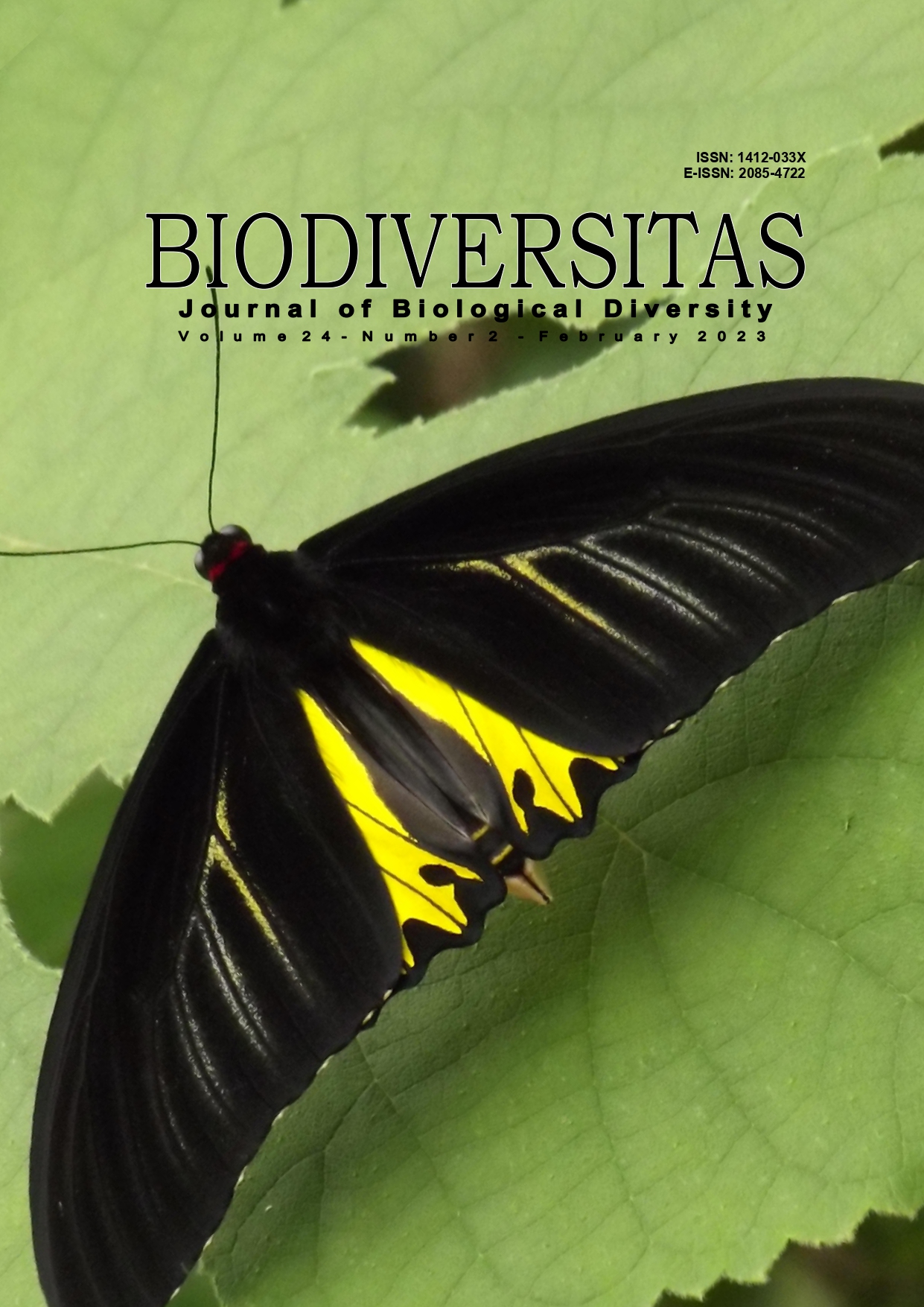Predicting the current potential geographical distribution of Baccaurea (B. lanceolata and B. motleyana) in South Kalimantan, Indonesia
##plugins.themes.bootstrap3.article.main##
Abstract
Abstract. Gunawan, Anwar K, Gafur A, Hilaliyah R, Waro AA, Hikmah N, Sakinah, Erwansyah M, Susilawati D, Lestari RD, Triana D. 2023. Predicting the current potential geographical distribution of Baccaurea (B. lanceolata and B. motleyana) in South Kalimantan, Indonesia. Biodiversitas 24: 930-939. Baccaurea lanceolata and B. motleyana are underutilized species of Kalimantan fruit tree but are a potential source of food and medicine. However, little is known about the occurrences and potential geographical distribution of B. lanceolata and B. motleyana. This study aimed to predict the potential geographical distribution of B. lanceolata and B. motleyana using MaxEnt, and understand the key factors which influenced their distribution. In addition to 19 bioclimatic factors, occurrence data for 57 B. lanceolata and 87 B. motleyana were gathered from field surveys. Solar radiation, altitude, and slope were then utilized to estimate the distribution of these species. Jackknife test was used to evaluate the importance of the environmental variables for predictive modeling. The Area Under Curve (AUC) values of B. lanceolata and B. motleyana were 0.927 and 0.851, indicating that the model is a good and informative model for species distribution of these species. The models for B. lanceolata suggest that the distribution is mainly influenced by altitude, temperature seasonality, precipitation of the wettest month, and precipitation of the driest quarter. Temperature, annual range, precipitation of the wettest month, precipitation of the coldest quarter, and solar radiation in July were the key environmental factors influencing the distribution of B. motleyana. The potential geographic distribution of B. lanceolata and B. motleyana can be useful information to help the researcher in restoration and conservation planning.

